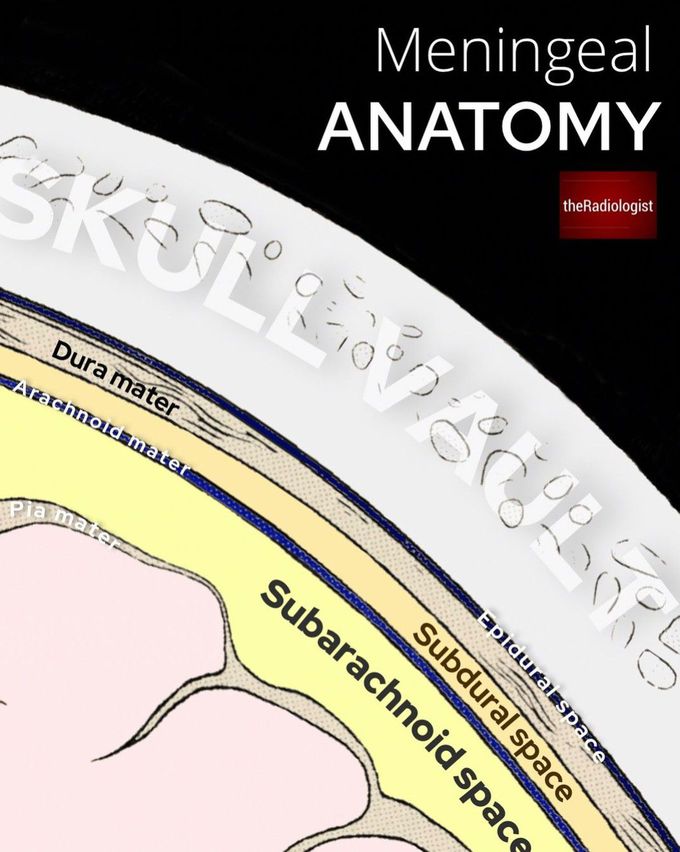


Anatomy Of The Meninges
Here we have the anatomy of the meninges - having a good grasp of this can help us when looking at CT and MRI imaging There are three layers of meninges: 1️⃣Dura mater: thicker outer layer consisting of two layers of connective tissue (periosteal and meningeal layer). The dural venous sinuses are found between the two layers. The meningeal layer folds upon itself to make up the dural reflections which divide the brain into compartments including the falx cerebri (separates the cerebral hemispheres) and the tentorium cerebelli (separates cerebellum from occipital lobes) 2️⃣Arachnoid mater: made up of connective tissue and is a vascular unlike the dura and pia. The ‘subarachnoid space’ lies below the arachnoid and contains CSF. 3️⃣Pia mater: thin layer overlying the brain surface ............. Different location of brain bleeds: 1. SUBARACHNOID: look for blood within the basal cisterns, especially the penatagon shaped suprasellar cistern. Linear streaks of blood within the sulci represent subarachnoid blood. Perimesencephalic SAH is a subset of SAH where no bleeding point can be found on angiography and the epicentre of the bleed can be seen anterior to the midbrain so checking between the ‘Mickey Mouse ears’ of the midbrain is always an important review area - a small focus of high density here can be the only abnormality on an acute CT head and I have seen these missed before. 2. SUBDURAL: blood between the dura and arachnoid mater. Usually due to a venous bleed with tearing of subdural cortical bridging veins. Blood will be peripheral and crescentic. Unlike epidural/extradural bleeds, these can cross sutures and they don’t cross the midline 3. EXTRADURAL: blood between the skull and outer periosteal layer of the dura. Caused usually by injury to the middle meningeal artery and you may see a temporal bone fracture. Unlike subdural bleeds these are biconvex and are restricted by the skull sutures

